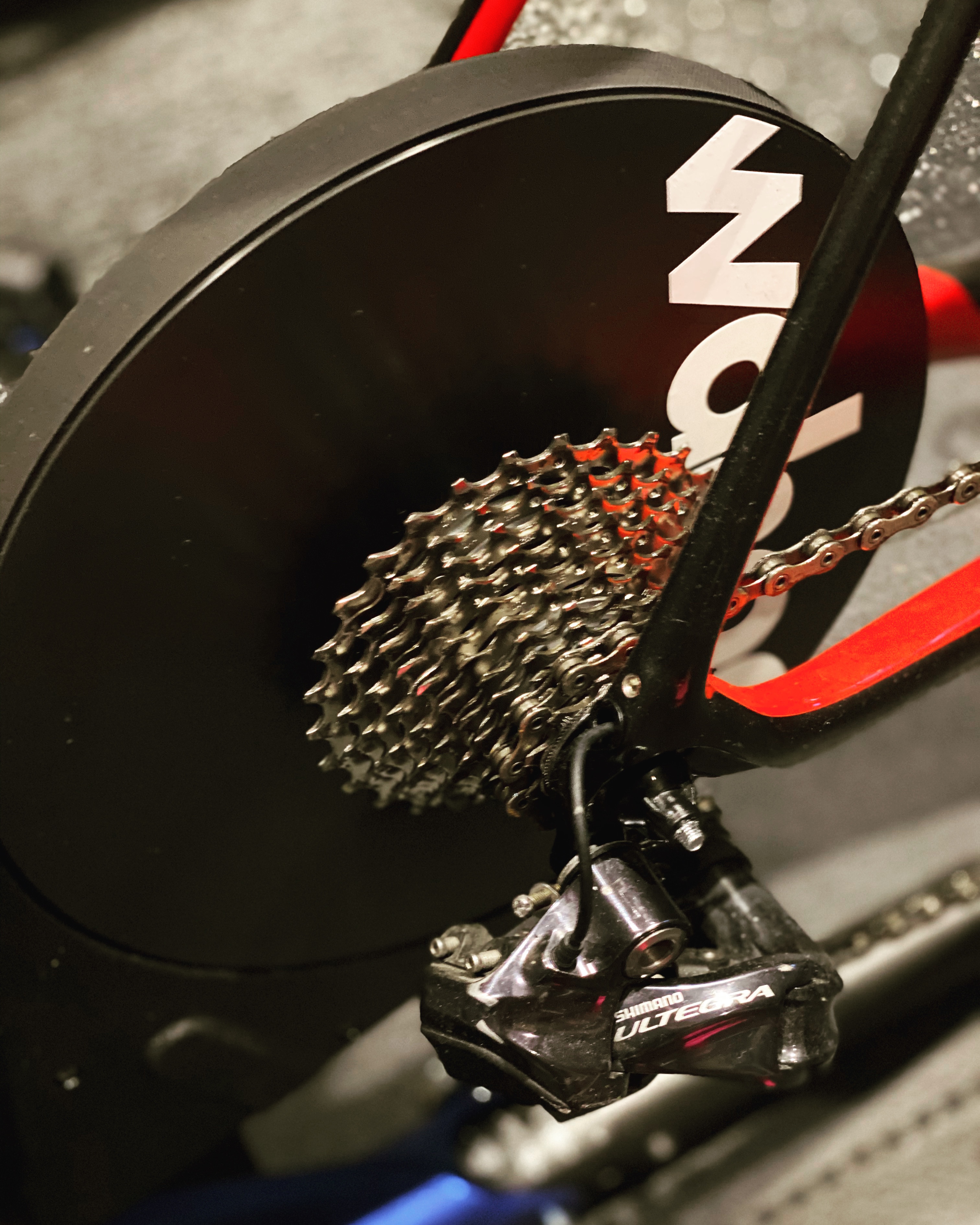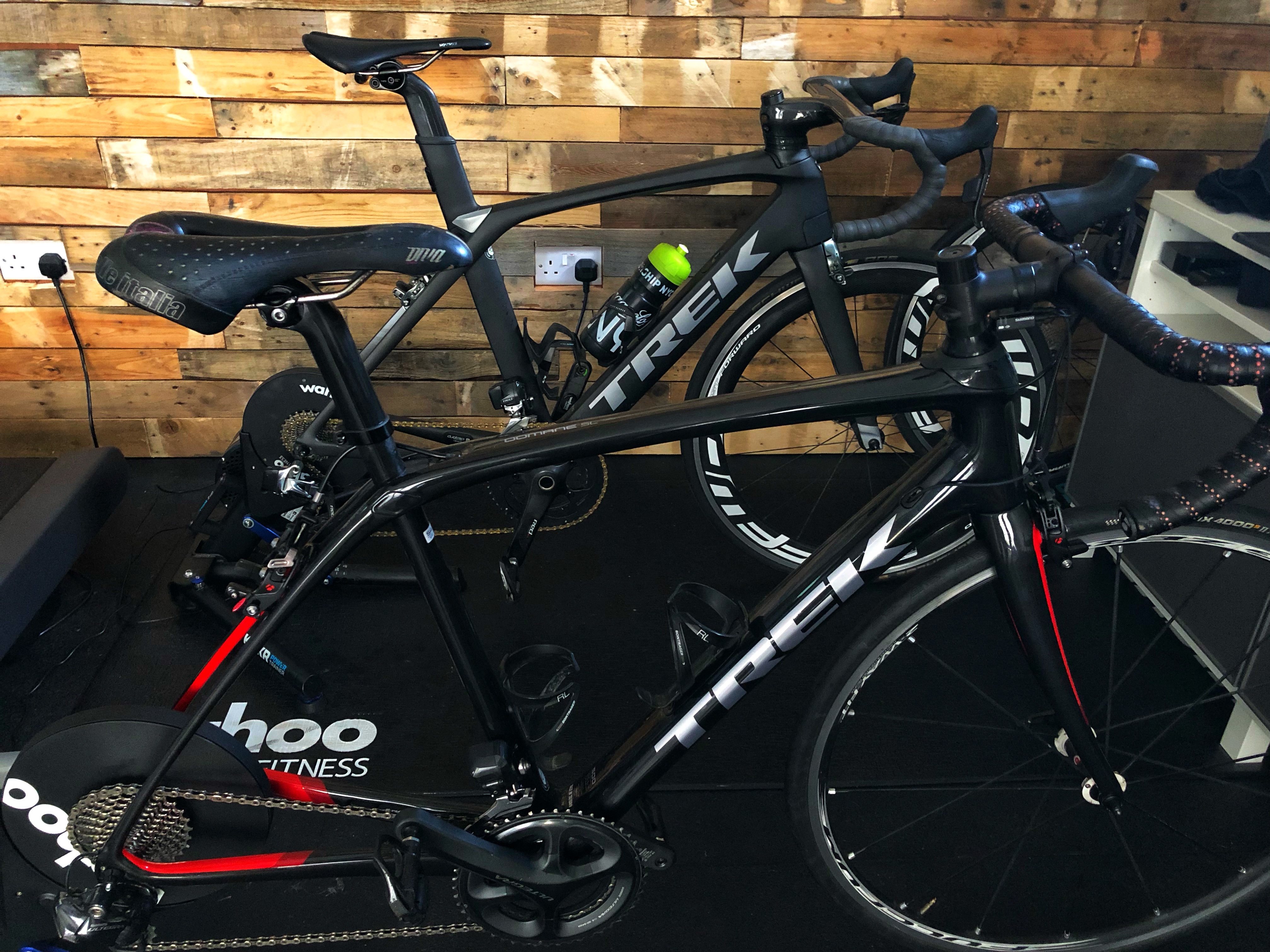Love them or hate them turbo trainers definitely serve a purpose for cycle training. It may be that with recent dire weather it is safer to continue training indoors than risk coming off in the severe wind and rain we have been experiencing in the UK, or you may opt to use a turbo trainer to get in a more structured workout. I have had this post in my drafts since February but given the current situation with COVID-19 I know I for one have been using mine more then ever and so it seemed timely to post.

I have included detail previously about how I use my turbo trainer to get in more structured workouts that are better completed using a turbo trainer than on the road where there are too many variables.
Depending on the sort of turbo trainer you use you could see a difference in performance compared to on the road. As noted above this can be down to variables outside of your control. What do I mean by variables? I mean stopping at junctions and traffic lights, build up of traffic, weather, diversions, punctures or mechanical’s to name a few. The other difference (which honestly can be huge) is whether or not you are not using a smart trainer. One of our first turbo trainers that I used was not a smart trainer and you controlled the resistance yourself and I could do an hour session and my average speed would be 25mph and upwards. This is not my ability when on the road (I wish)! It was a massive shock to the system when i got a smart trainer let me tell you!
So what is a smart trainer? When you use a smart turbo trainer you will connect to some technology to help you get more from your workout. These turbo trainers will adjust the resistance according to the workout so for example if you are on a hilly course the resistance will increase to simulate the same effort as if you were on the road and riding up a hill. You will also hear the term ERG mode and this basically means that the trainer adjusts the resistance for you to help you hit a certain target power level without needing to change gear.
Some people opt for standard turbo trainers and use these with power meters though you will not experience the change in resistance as mentioned above and you will need to change gears to replicate this yourself. With a standard turbo trainer you will not be able to connect to programmes such as Zwift, Sufferfest or Trainer Road (or similar) unless you have additional items like cadence sensor or speed sensor.
Of course smart trainers are more expensive but once you have experienced the difference between the two you will almost certainly be sold on the smart trainer, or at least speaking from personal experience I can say that is true for me.

We have had a number of turbo trainers to date including the following:
- Rollers – Tacx Antares £164.99. Now rollers require balance and are something of a fine art, in my opinion, which is why I have never used them! My husband, however, has (albeit also needing some time to master them) and they do not attach to the bike in any way, you simply ride on the rollers.
- Smart rollers – Elite Arion Smart B digital £348 – these are my husbands and no I would not attempt these as I would be on the floor pretty quickly but I am always pretty mesmerised by those who use rollers and appear to do so effortlessly with perfect balance! Smart rollers like a smart turbo will adjust resistance so balance and power are required at the same time here.
- Turbo Trainer – Tacx Blue Matic magnetic turbo trainer £139.99. This is a trainer where you leave your rear wheel on the bike and attach to the trainer. I’d recommend using a turbo tyre for this as the make up on them is slightly different and they are designed to stop overheating.
- Smart fixed wheel turbo trainer – Bkool Smart Go. Like the above where you leave the rear wheel on but have the additional functionality of resistance from being a smart trainer.
- Smart direct drive turbo trainer – Wahoo Kickr £999 – we have two of these, which sounds like a massive luxury but we first got one 5 years ago and it is still going strong and as we often find we both are training on this equipment we invested in a second so my husband and I have one each. Direct drive turbos are basically where you mount your bike directly on the turbo by removing the back wheel. Your chain will then run on the cassette attached to the trainer.
Now some turbo trainers can be loud! I have friends that were worried to use at home for fear of upsetting the neighbours. We are lucky ours are in our home gym so won’t offend anyone and to be honest I am so used to it now I couldn’t tell you if they are noisy or not.
I have a mat under mine as I find it is a total sweat fest. Invest in some good padded bib shorts, always have a hand towel, bottle of water and a fan!
If you have someone who will write you a plan and sessions that are tailored for your training then fabulous! If not you can do an FTP test and follow one of the many plans from the programme you choose and they are also very effective. I use Zwift and there are different routes and sessions available to use. Doing an FTP will ensure you are getting the most from the workout at the levels that are suitable for you. Handy hint – there is no need to do the long FTP test – it has a longer warm up period and that is it, the short version complete serves the purpose! I also have friends who do the Ramp Test instead of FTP though I have not yet tried this so cannot comment.
I am on week three of working from home and I have been starting every day with an hour on the turbo trainer, which has started my day nicely though I do need to remind myself to rest also! My husband and I also thought it was funny to call this our daily commute (the pic was a joke and we do not actually wear our helmets, coats or bags!).

Do you have a turbo trainer? Love it or hate it?

Leave a Reply